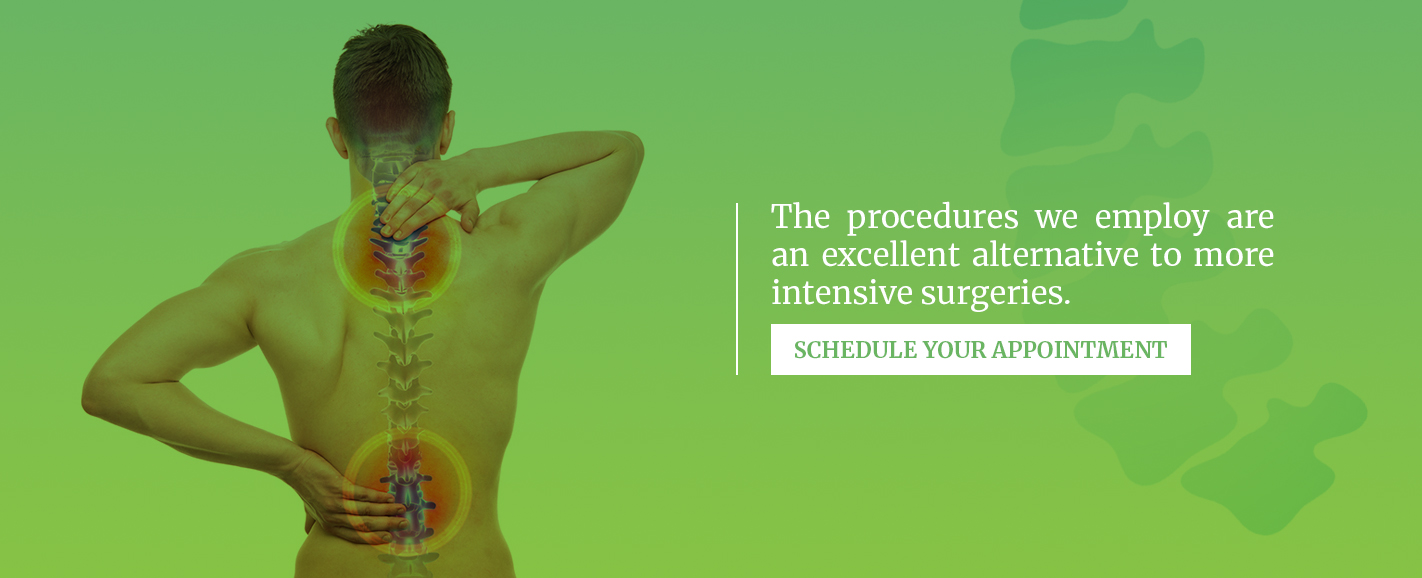The 411 on Degenerative Disc Disease
Back pain is never fun or easy to deal with, however, when doctors throw around a wide variety of terms, it can be even more difficult to figure out exactly what condition you’re dealing with. Before, we’ve chatted a bit about the difference between a bulging disc and a herniated disc in your spine, but another term that often is talked about in conjunction with these conditions is degenerative disc disease. So what is degenerative disc disease, and what do you need to know about it in order to take control of your health? Keep reading more from the Spine INA to learn more.
What is degenerative disc disease?
If you’ve been diagnosed with degenerative disc disease, it’s hard to not get caught up with the idea of having a degenerative disease that could get worse as you age. However, the name is a bit misguided. Degenerative disc disease is pain that occurs in the spine due to wear and tear or aging of the discs found between each spinal vertebrae that cannot be attributed to any other causes. The diagnosis of degenerative disc disease, while typically visible on MRI imaging, is often a diagnosis through exclusion. And just because you get older doesn’t mean that your discs are going to get worse, or that you’re going to experience pain.
The difficulty with degenerative disc disease is that there is no single cause that can be associated with the resulting breakdown of the discs and the pain that accompanies the process. However, even if you’ve been diagnosed with degenerative disc disease, there are still plenty of options available for you to receive treatment.
Testing for Degenerative Disc Disease
If you suffer from chronic back pain, especially lower back pain, then it’s probably past time to see a doctor. While this condition is a diagnosis of exclusion, an MRI can help to visually identify what is going on with your back and if there are other problems that could be causing your pain. In addition, when you look at an MRI, discs that are breaking down will look much darker than a healthy disc, so there are some visual cues for degenerative disc disease. However, you’ll still need to undergo a physical exam from your doctor to have a full understanding of what is going on with your spine.
“I have degenerative disc disease. What can I do about it?”
At the Spine INA, we hear this a lot from patients who have tried other doctors and avenues of treatment that have failed. But that doesn’t mean you should give up on finding pain relief from your back problem. You just have to find the right treatment option for your needs.
There are many non-surgical or minimally invasive surgical options that can treat your back pain with degenerative disc disease. It’s important to start with activity modification, and often physical therapy. These can help remove some of the external causes of your pain and strengthen your back muscles enough to support the vertebrae enough to compress the disc space less. In addition to addressing any potential external factors, you need to address the inflammation and damage in the disc space itself.
In order to address the inflammation, one of the best non-surgical techniques includes steroid injections into the disc space. Steroids help to reduce the inflammation, and in turn, reduce the pain. These injections are exceptionally minimally invasive as well. Even though they don’t stop the disc from continuing to break down, you can definitely stop the pain that occurs from nerve impingement.
If all of these treatment options fail and you continue to have chronic, life inhibiting pain past six months, you become a surgical candidate if you want to journey down that road. There are two very specific options for both degenerative discs and other disc problems, like severe herniation. These options are vertebral fusion and disc replacements. While there are some benefits to having these surgical procedures if truly nothing works, there are many candidates that should not undergo invasive spine surgery. Younger individuals should not have a fusion or a disc replacement. If you have damaged discs and are younger, fusion can cause additional strain on other discs, causing them to breakdown post-procedure. You just extend the problem into other areas of the spine. Replacements sound great, and they are beneficial, however, if you’re too young, the replacement eventually becomes a fusion due to the body’s natural healing process. If you’re too old, the risks aren’t necessarily in the procedure itself but in the anesthesia process needed to perform the procedure. No matter what, invasive surgery shouldn’t be your first option for degenerative disc disease treatment.
At the Spine INA, located in New Jersey, we work hard to provide you with accurate diagnoses and options in order to relieve your pain and treat your back. You deserve to be able to reclaim your life, so let us help you do that. Call today to schedule your consultation if you’ve been diagnosed with degenerative disc disease.










Leave a Reply